Why Disequilibrium is the Greatest Opportunity for India's Future and How Cooter Ventures Is Building for it.
India’s retail sector is at a turning point, caught between traditional systems and digital disruption. This blog explores the concept of market disequilibrium — what it is, what causes it, and why it might be India’s biggest opportunity to innovate. From smarter supply chains to contextual tech, discover how the imbalance is shaping a new future and how Cooter Ventures is helping local businesses lead the shift.
ECONOMICSRETAILAI
Pranav Pushkar & A.I
6/23/202510 min read
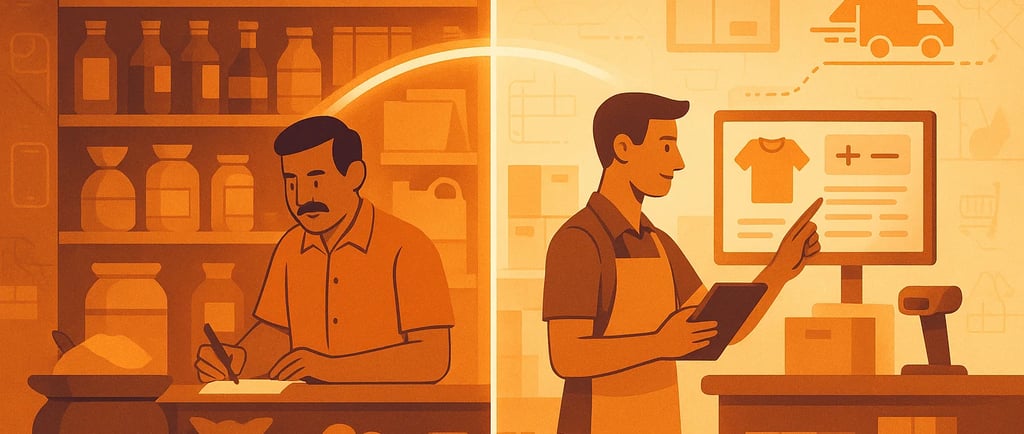

To Understand Disequilibrium, We Must First Understand Equilibrium
In economics, the term equilibrium refers to a state where market supply equals market demand. It is the point at which the quantity of a good or service supplied by producers is exactly equal to the quantity demanded by consumers, resulting in a stable market price.
This may sound technical, but it’s actually a simple idea: equilibrium is the balance where both buyers and sellers are satisfied.
To understand equilibrium, let’s break down its building blocks:
Supply is the quantity of a product or service that “producers” are willing and able to offer at a given price. As prices rise, producers are typically more willing to supply more as higher prices means higher profits.
Demand is the quantity of a product or service that “consumers” are willing and able to buy at a given price. As prices rise, demand generally falls as consumers become hesitant to spend more, and vice versa.
The Price–Quantity Relationship ⚖️
If the price of a product rises:
Supply increases (producers want to sell more)
Demand decreases (consumers want to buy less)
If the price of a product decreases:
Supply decreases (less incentive to produce)
Demand increases (products are more affordable)
This inverse relationship between price and quantity is what shapes the backbone of market behavior. Both quantity and price constantly adjust to reach a point where supply meets demand — this achieved point is called equilibrium.
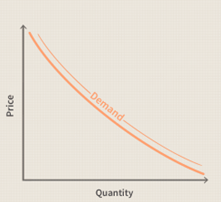

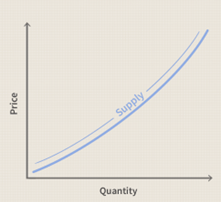

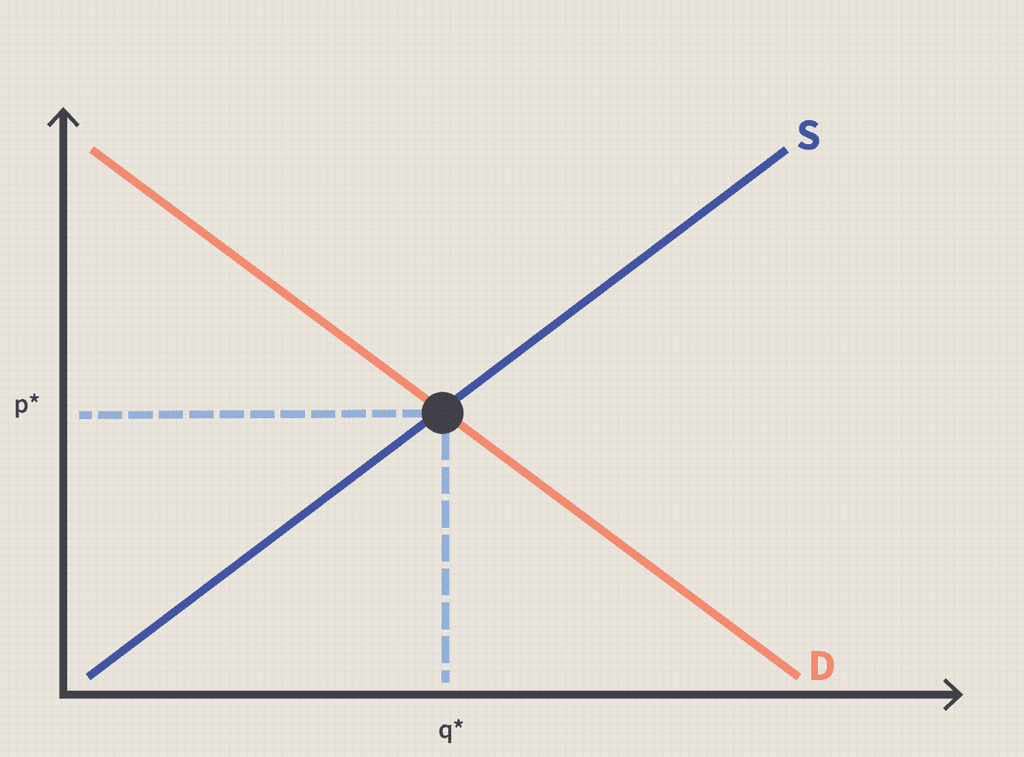

Equilibrium
Why Equilibrium Matter
1. Efficient Resource Allocation: At equilibrium, resources like time, money, labor, and goods are neither wasted nor underused. The market produces just enough to meet consumer demand.
2. Price Stability: Since supply meets demand, prices tend to stay stable. There's less pressure for sudden hikes (due to shortages) or drops (due to oversupply).
3. Consumer Satisfaction: Consumers can buy the quantity they need at a price they consider fair—there are no frustrating shortages or inflated costs.
4. Producer Confidence: Producers can plan better, knowing that the goods they supply will be purchased. It reduces the risk of unsold inventory or lost revenue.
5. Market Predictability: Equilibrium allows businesses and governments to make better decisions because the market behaves in a more predictable and balanced manner.
6. No Shortage or Surplus: Equilibrium eliminates waste (from overproduction) and lost opportunities (from underproduction), making the economy healthier.
Disequilibrium: A Point of Disbalance
Disequilibrium is a state in which market forces of supply and demand are out of balance, resulting in a situation where the quantity demanded does not equal the quantity supplied at the current market price.
While equilibrium represents a perfectly balanced market, the truth is such balance is rare, especially in fast-changing economies. Markets are dynamic, influenced by shifts in technology, policy, consumer behavior, and supply chains. These constant changes often push the market away from equilibrium.
This state of imbalance is known as disequilibrium.
What Causes Disequilibrium?
Sudden Change in Consumer Demand: A sudden rise or fall in consumer interest due to trends, seasons, news, or social behavior can push demand beyond what the supply can match, or cause demand to collapse.
Disruptions in Supply Chain: Any interruption in the flow of goods caused by strikes, natural disasters, transport delays, or raw material shortages can limit supply and create imbalance.
Technological Advancements: The introduction of new tools, platforms, or ways of doing business (like online shopping or UPI payments) can shift demand patterns faster than traditional sellers can respond.
Lack of Market Information: When businesses make production or stocking decisions without real-time consumer data, they often overestimate or underestimate demand.
Price Controls or Government Policy Changes: Government actions like price caps, subsidies, or taxes can interfere with the natural pricing mechanism, leading to overconsumption or underproduction.
Behavioral Biases and Expectations: When buyers or sellers expect future price changes (e.g., inflation, sales seasons), it can cause hoarding, panic buying, or speculative behavior—distorting natural market balance.
Structural Inefficiencies: In many developing markets, logistical inefficiencies, limited digital adoption, or poor infrastructure contribute to recurring supply-demand mismatches.
Disequilibrium as a Catalyst — From Imbalance to Innovation
Historically, disequilibrium has been seen as a threat - something to fix, stabilize, or control. But if we study the world’s most transformative economic shifts, a clear pattern emerges:
Disequilibrium is where innovation begins.
Disequilibrium is not necessarily a failure — it’s a signal that the market is adjusting, reacting, or evolving.
Periods of imbalance often signal that the existing systems can no longer keep up with new demands, technologies, or behaviors. When old structures fall out of sync, they create space for new ideas to emerge.
Historical Examples: Innovation Born from Imbalance
🏭 Industrial Revolution (18th–19th century)
Rapid urbanization and technological progress disrupted traditional craft economies. While this caused labor shifts and supply-demand mismatches, it also led to mass production, factory systems, and global trade.
💳 Digital Banking & UPI in India
Cash-dependence created friction in payments. The push toward financial inclusion created temporary disequilibrium in rural and unbanked areas — but it laid the foundation for UPI, Aadhaar-based systems, and fintech revolutions.
🛍️ Rise of E-commerce
Traditional retail couldn’t match changing consumer behavior (on-demand, home delivery, personalized experiences). This mismatch birthed platforms like Amazon, Flipkart, and Meesho, reshaping entire industries.
Disequilibrium drives change. It forces us to rethink assumptions (“Why isn’t this working anymore?”), reveals blind spots in the system (infrastructure, access, pricing, behavior), creates urgency for solutions (innovations become survival tools) and opens space for new players (startups, disruptors, technologists). It acts as both pressure and permission pushing innovators to solve problems that the market status quo ignored.
The Opportunity – Building Through the Disequilibrium
As we discussed earlier, disequilibrium often feels like a warning sign but in reality, it’s a powerful signal that the system is ready for change. When the old ways of working no longer meet new expectations, we’re presented not just with a challenge, but with a moment of creation.
India’s retail disequilibrium reveals precisely this moment. The gap between digitally empowered consumers and underserved retailers is not a dead zone it’s open space. Space for new systems, smarter tools, and more inclusive models that can serve both the efficiency of modern commerce and the legacy of traditional retail.
Instead of seeing this imbalance as something to fix and forget, we can use it as a foundation to build better, local-first innovations, such as:
Demand-Sensitive Inventory Tools: Help retailers align stocking decisions with real-time demand patterns, reducing dead stock and improving cash flow efficiency.
Smarter Supply Chain Solutions: Rebuild the supply chain with fewer intermediaries, faster delivery loops, and transparent pricing that benefits both retailers and end consumers.
Contextual Digital Platforms: Create tech solutions that speak local languages, suit mobile-first users, and require minimal training, ensuring wider and sustained adoption.
Financial and Digital Enablement and Support Systems: Provide access to micro-credit, digital payments, GST/e-invoicing tools, and helpline-based onboarding that empowers retailers to operate formally without friction.
Localized Logistics Infrastructure: Enable affordable and responsive last-mile delivery, restocking, and return systems tailored for Tier 2/3 cities and dense retail clusters.
Grassroot Co-Creation: Build solutions in collaboration with the very people who will use them: kirana owners, stockists, and local distributors to ensure usability and trust.
Capacity Building and Digital Literacy Awareness Programs: Train shop owners, staff, and supply participants in basic digital skills and inventory logic turning tech from a barrier into a bridge.
Is India’s retail sector in a state of disequilibrium today?
The short answer is: Yes.
India’s retail sector is undergoing a massive transformation. Traditional systems that have worked for decades are suddenly struggling to keep pace with a fast-evolving consumer base, technological disruption, and policy-level shifts.
What we’re witnessing is a state of disequilibrium at scale where the expectations of the market no longer match the infrastructure supporting it.
⚠️ What’s Causing This Imbalance?
A. Massive Unorganized Sector Meets a Digital Leap
Over 85% of India’s retail sector is unorganized made up of small kirana stores, street vendors, wholesalers, and local supply networks. These players operate with limited formal systems, cash-based transactions, and deep neighborhood trust.
At the same time, the broader retail industry is rapidly digitizing; E-commerce and Q-commerce platforms are expanding deep into Tier 2/3 cities, initiatives like ONDC are pushing for open digital commerce, and at the same time consumers are demanding online convenience and transparency. This growing gap between digital expectations and analog realities is at the heart of India’s retail disequilibrium.
B. Disintermediation of the Supply Chain
Traditional supply chains involve multiple intermediaries: distributors, regional stockists, and brokers. While they’ve long supported kiranas, they also create inefficiencies and inflated pricing.
With the rise of D2C and D2K (Direct-to-Kirana) models, these layers are being bypassed. This may increase speed and affordability but it also disrupts deeply rooted supply relationships, leaving unorganized retailers without a clear footing in the new system.
C. Digital Consumer Behavior vs. Retailer Capabilities
Consumer behavior in India has undergone a dramatic transformation. Urban shoppers and increasingly those in semi-urban and rural regions expect conveniences like online browsing, digital payments, doorstep delivery, and dynamic pricing. This shift is largely driven by the rise of e-commerce platforms, instant delivery apps, and mobile-first experiences.
However, most local retailers, especially in the unorganized sector, continue to operate manually. Many kirana stores still use pen-and-paper billing, rely on verbal inventory checks, and rarely adopt new tools unless pushed by external forces. This disconnect between what modern consumers expect and what traditional retailers can offer has created a widening performance gap. While the consumer has moved on, the seller is still catching up resulting in lost business opportunities and eroded customer loyalty.
D. Inventory Guesswork in a Data-Driven Market
In the absence of real-time insights or demand tracking, small retailers often rely on intuition, routine, or wholesaler influence to decide what and how much to stock. While these informal methods have historically served their purpose, they are increasingly unreliable in a fast-moving, fragmented market.
On the other hand, organized retail chains and digital-first platforms use data to manage inventory with precision. They analyze customer behavior, forecast demand using AI, and align stocking decisions accordingly. This contrast means that while some players optimize every shelf, many local retailers continue to deal with overstocked slow-moving items or missed opportunities on trending products. In such a scenario, the cost of being disconnected from demand signals is high and contributes directly to retail inefficiency.
E. Policy Pushes Without Grassroots Readiness
Initiatives like GST, e-invoicing, and ONDC aim to bring structure and inclusion. But without support systems at the grassroots level, the rollout of these policies can feel more like pressure than empowerment for many small retailers.
The Risk – An Unequal Retail Future
If India’s current retail disequilibrium isn’t addressed, it risks deepening the divide between tech-enabled businesses and the unorganized sector. Millions of small retailers especially kirana stores are struggling to keep up with digital expectations, lacking the tools, data, and infrastructure to compete. As organized players grow more efficient and consumer-centric, traditional retailer's risk being left behind, widening the gap in profitability and market relevance.
This imbalance isn’t just technological; it’s geographic too. Urban areas are quickly integrating with digital ecosystems, while rural and semi-urban regions remain underserved. The result: uneven access, missed opportunities, and growing inequality. Poor inventory decisions and outdated systems lead to economic waste, while increasing centralization in supply chains raises the risk of monopolies and price manipulation.
More than just inefficiency, this trend threatens fairness. Without inclusive solutions, Indian retail could evolve into a system that rewards only the digitally prepared, leaving behind the very businesses that have long powered local economies.
But within this instability lies a window to rebuild smarter and more equitably.
Rebalancing Through Innovation: How Cooter Ventures Is Powering Change with Purposeful Technology
At Cooter Ventures, we don’t just observe the market’s disequilibrium, we understand it, ground up. We recognize that the retail ecosystem is shifting, and unless the unorganized sector is supported with context-aware tools, the gap will only widen.
That’s why our mission is clear: to help unorganized businesses transition into an organized ecosystem, not by disrupting them, but by equipping them to thrive in the new normal. For us, restoring equilibrium is not about forcing change, but enabling sustainable adaptation.
Here’s how we are already building in alignment with the opportunity zones this disequilibrium presents:
Cooter Circle is our foundational step toward understanding the local business landscape. By mapping unorganized retailers, collecting insights, and creating a digital footprint, we're laying the groundwork for smarter logistics, hyperlocal demand matching, and true grassroots co-creation. It’s not just data collection it’s awareness-building and inclusion in action.
Cooter Store is designed as an all-in-one solution tailored for small retailers. From inventory intelligence to billing, analytics, and restocking recommendations, it empowers retailers to make better stocking decisions perfectly aligned with the need for Demand-Sensitive Inventory Tools. And critically, the platform is built with a mobile-first, language-flexible, clutter-free interface, reflecting our commitment to Contextual Digital Platforms.
Cooter Now provides a space for businesses to go online, list their products, and expand their reach beyond their physical location. It’s not about turning every kirana into an e-commerce giant, it’s about giving them visibility, digital identity, and access to broader demand networks.
Each of these initiatives ties back to our broader vision: to bridge the gap between tradition and transformation, so that small, local, often-overlooked players aren’t left behind; they lead the way forward.
Disequilibrium isn’t just something we’ve studied, it’s the tension we’ve built our solutions around.
We hope this helped you see disequilibrium not as a breakdown, but as a moment of breakthrough a space where innovation, empathy, and technology can come together to build a more balanced future. Whether you're a policymaker, a founder, a retailer, or just someone curious about how change unfolds at the ground level this shift belongs to all of us.
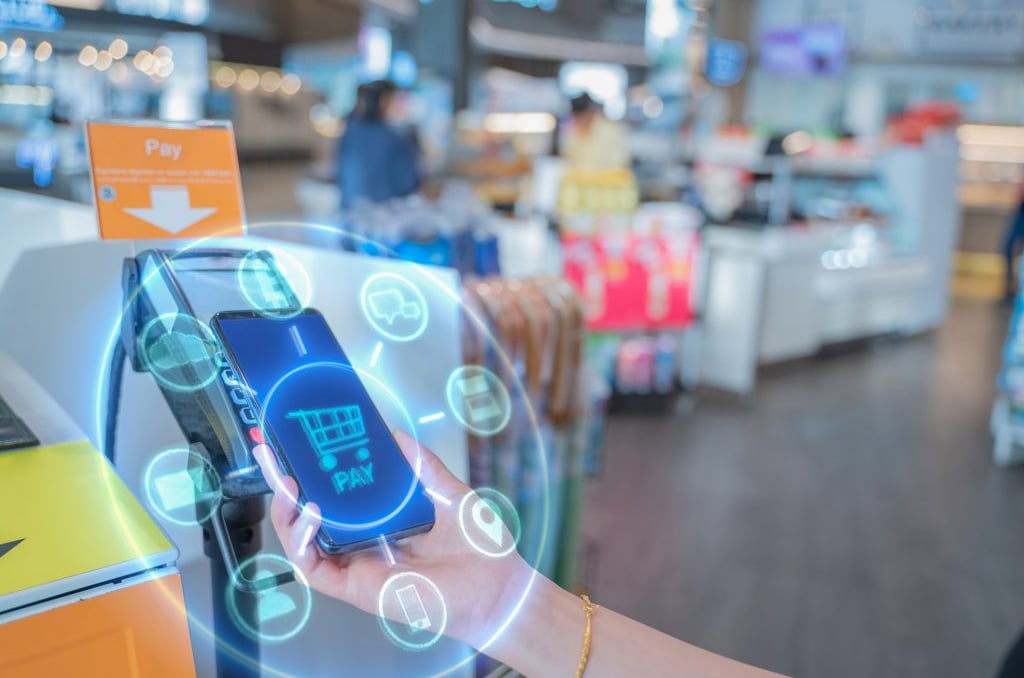

Let’s Build Bharat’s Future, Together.
Whether you’re an investor, policymaker, or partner, we’d love to connect and explore how we can grow Bharat’s small business ecosystem together.

